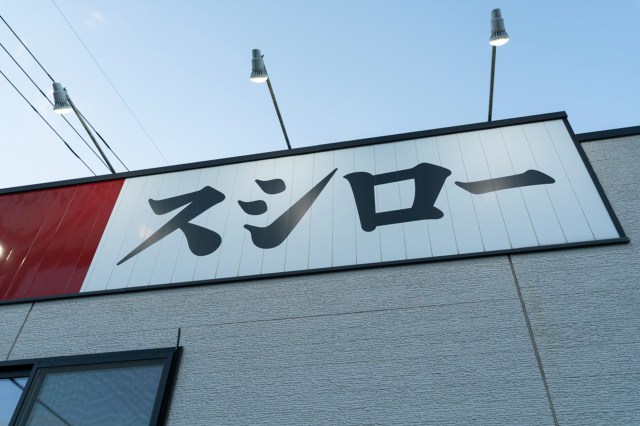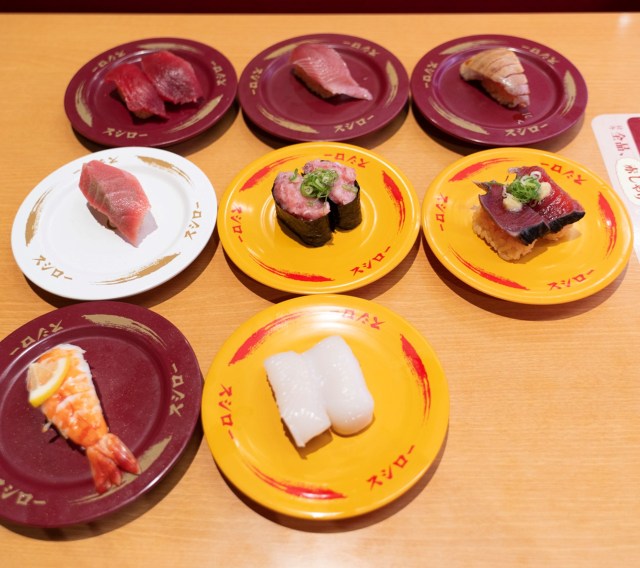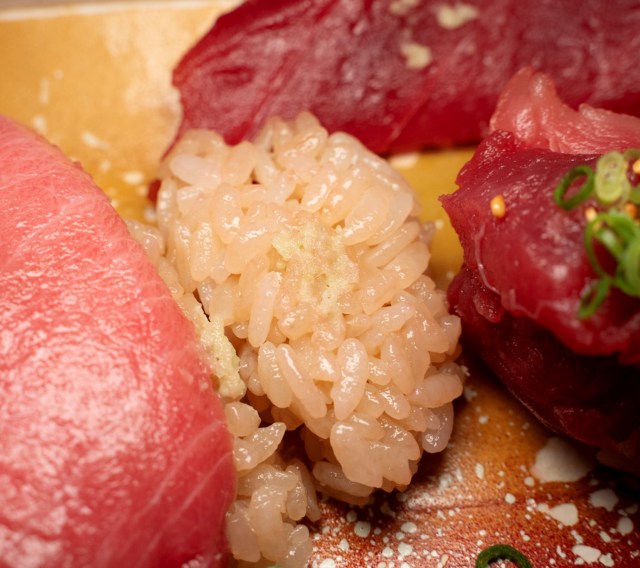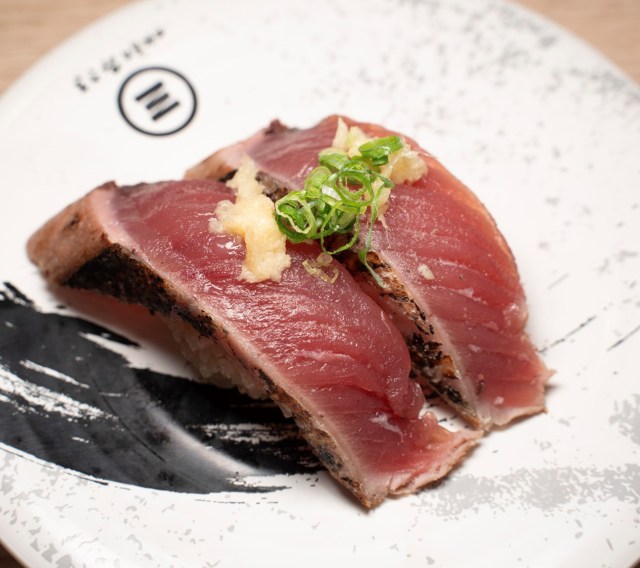Conveyor belt sushi chains Sushiro and Misaki spontaneously create an akashari season with sudden outcomes.
This month, conveyor belt sushi chains Sushiro and Misaki each kicked off thrilling occasions that includes a twist on standard sushi: utilizing crimson rice as an alternative of the same old white. This rice, generally known as akashari, is made with akazu, a crimson rice vinegar that offers it a particular hue.
So, what’s the cope with akazu? It’s a crimson rice vinegar derived from sake lees. This course of takes quite a bit longer—about two years for the sake lees to mature and a further three to 4 years for the vinegar to develop, in comparison with the 11 to 14 months for the vinegar utilized in common white sushi rice. That’s why akazu is a bit pricier and sometimes present in high-end sushi eating places. Whereas Sushiro was providing akashari sushi as a part of a limited-time occasion earlier than, Misaki has it on their common menu, but in addition has a particular promotion going by which the chain says it’s elevated the standard of its crimson sushi rice only for this promotion.
With each chains providing akashari across the identical time, we couldn’t resist the possibility to check their choices. We’d by no means tried akashari earlier than and questioned if swapping out the vinegar would make a noticeable distinction however we had out doubts. If it was soy sauce or wasabi, maybe the common individual may distinguish a distinction however… vinegar? We weren’t certain.
First up was Sushiro.

Since we had been doing a style comparability, we selected Sushiro objects as near doable as those on Misaki’s occasion menu: lean tuna (akami), medium-fatty tuna (chutoro), fatty tuna (otoro), seared tuna (aburi), tuna gunkan, shrimp, bonito, and squid.

Beginning with the akami, we had been shocked by how crimson the rice was—rather more vibrant than we anticipated.

Scrumptious, as all the time. You actually can’t go flawed with Sushiro’s tuna, however we discovered it arduous to pinpoint the distinction in taste in comparison with the same old white sushi rice. First got here the style of the soy sauce, adopted with the style of the tuna after which… that was it. As we had anticipated. Choosing up on the distinction in vinegar is solely not what a mean individual can do.
It may be completely different, although, if we tried consuming the sushi rice by itself. We determined to provide it a strive utilizing the shrimp sushi, because the shrimp was much less prone to have transferred its taste to the rice than the cuts of fish, so we lifted the shrimp off and, sans soy sauce, ate the crimson rice.

The refined bitter notice within the aftertaste, very like the style of sake lees, of the akazu was now noticeable. There was additionally a faint trace of sweetness, however it was the sourness that stood out most predominantly. With such a lightweight taste, we felt it will be higher paired with a mild-flavored topping in order to not be overpowered, which was sadly the case with the remainder of the tuna we tried.

The bonito was overflowing with the flavour of each the onion and the ginger, and the sushi was as scrumptious because it all the time is, however the style of the akashari was nowhere to be discovered.

Once we ate the squid, nevertheless, we observed one thing. There was a definite akazu taste. So we decided that it’s not the style itself that’s weak, it’s simply affected by what it’s eaten with. If we wished to benefit from the distinctive qualities of akashari, it appeared like we actually must strive it with a topping that had a lighter taste.
With that in thoughts, we ordered just a few extra varieties of sushi to see how they fared with crimson rice.

First was sea bream seasoned with sesame oil and ponzu sauce. These forceful flavors, together with the nori (seaweed), utterly suppressed the style of the akashari.

The shiso (Japanese basil) on the flounder fin was additionally overpowering.

Not quite a bit modified till we got here to the unseasoned crimson sea bream and what a growth it was. The chewy texture and its subtly candy and delicate taste paired fantastically with the sake lees-like taste of the akashari. This was most likely the perfect sea bream that we’ve ever had at Sushiro. The compatibility of the 2 was merely exceptional. Once we considered it some extra, we realized that crimson sea bream can also be utilized in sakamushi (sake-steamed) dishes, so fish that go effectively with sake may shine when mixed with akashari. If you happen to’re making an attempt akashari, crimson sea bream is the way in which to go!

After our Sushiro journey, we headed to Kaiten Sushi Misaki to strive their akashari in a set that includes one every of varied varieties of tuna.

The colour of Misaki’s lean tuna was not that a lot completely different to that of Sushiro’s, and whereas the tuna was tasty, we nonetheless couldn’t detect a lot distinction within the rice’s taste. We did really feel that the fatty tuna had an edge over Sushiro’s by way of deliciousness, although.

We additionally tried bonito at Misaki, however once more the sturdy flavors of the ginger overpowered the akashari.

On nearer inspection, we really feel like that is to be anticipated. Misaki makes use of much less rice per piece than Sushiro does, so with the comparatively bigger measurement of Misaki’s toppings, it may be particularly arduous for the flavour of the akashari to face out.
There was one ultimate merchandise on our taste-testing record: longtooth grouper with kelp (konbu). Regardless that Sushiro didn’t provide it, we had a sense that it will go nice with akashari, very like it did with the crimson sea bream. We put it in our mouth and—it was so scrumptious! The feel was chewy and deliciousness seeped out with none specific taste. That is what scrumptious white fish needs to be like! Nevertheless, not like Sushiro’s crimson sea bream, we couldn’t sense the distinctive akazu style. It was unusual. Absolutely there needs to be a sake lees-like aftertaste with a white fish like this.

We tried the akashari by itself and observed that it was quite a bit milder in taste than Sushiro’s. The principle attribute of Sushiro’s was its sake lees taste, adopted by its sweetness, whereas Misaki’s akashari was virtually the reverse with the sweetness being the principle issue and a weak trace of sake lees. Nevertheless, the extent of sweetness of each was about the identical, that means that Misaki’s akashari didn’t set off the identical synergy with the white fish. With out evaluating the akashari at Misaki to its common sushi rice, it’s seemingly you received’t have the ability to see what makes it particular.
Evidently Sushiro’s akashari is designed to face out with its daring sake lees taste, making it an ideal match for sure varieties of fish. That is most likely as a result of it solely getting used throughout particular promotions, so they need the presence of the akazu to be observed by everybody. Misaki’s model, being a part of their common menu, is milder and extra versatile, having the ability to be paired with any fish, at the price of weaker taste impression.
Sushiro’s akashari occasion wrapped up on September 16, however in the event you missed out, don’t fear—it’s sure to return once more. Within the meantime, Misaki’s akashari remains to be value a strive. It may not have the identical punch, however it’s undeniably scrumptious.
Associated: Sushiro location record, Misaki location record
Images ©SoraNews24
● Wish to hear about SoraNews24’s newest articles as quickly as they’re revealed? Observe us on Fb and Twitter!
[ Read in Japanese ]





